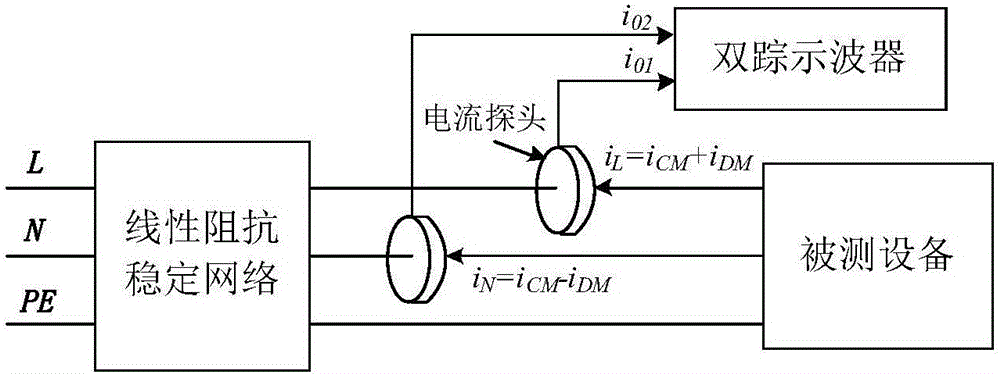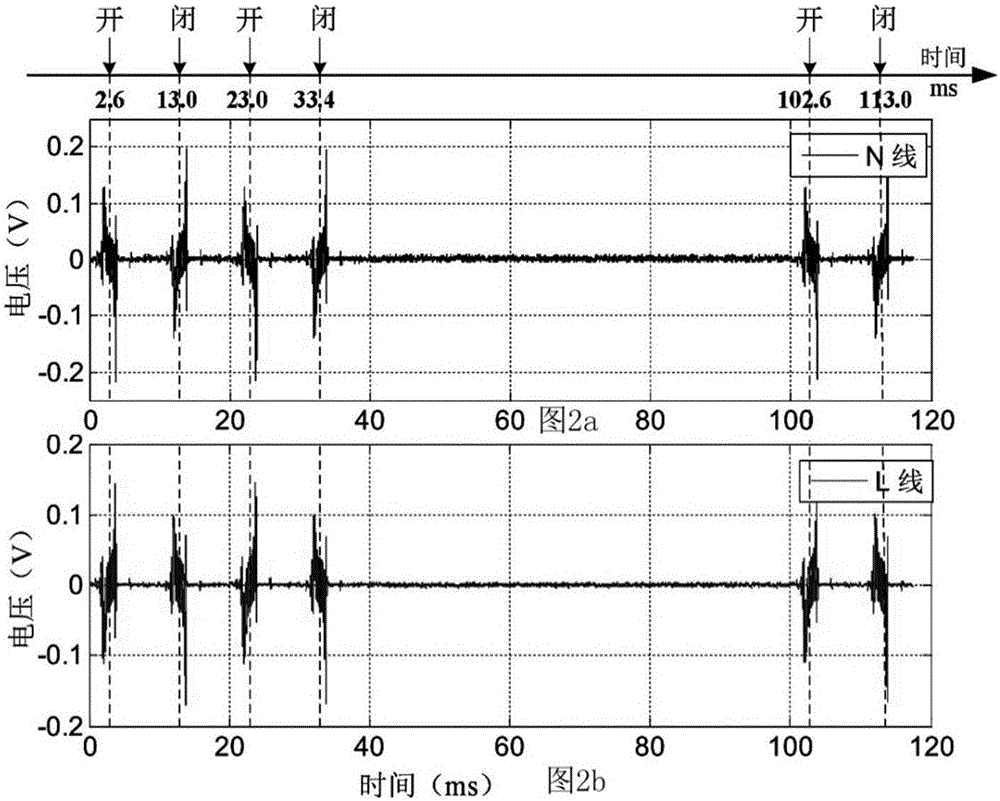Single-channel conducted-electromagnetic-interference-noise separation method
A technology for conducting electromagnetic interference and noise separation. It is used in the measurement of interference from external sources, measurement of electricity, measurement of electrical variables, etc., to save economic costs, overcome synchronous measurement errors, and reduce separation performance.
- Summary
- Abstract
- Description
- Claims
- Application Information
AI Technical Summary
Problems solved by technology
Method used
Image
Examples
Embodiment Construction
[0054] The present invention will be described in detail below in conjunction with the accompanying drawings and specific embodiments.
[0055] see figure 1 , the RF current probe measures the mixed signal of the live wire (L) and the neutral wire (N) of the power supply, and the line impedance stabilization network can measure the conducted EMI noise, then the noise current i on the L and N wires L (t), i N (t) are respectively:
[0056] i L (t)=i CM (t)+i DM (t)
[0057] i N (t)=i CM (t)-i DM (t)
[0058] Among them, i DM (t) and i CM (t) is the differential mode and common mode current of conducted EMI noise, i L (t), i N (t) The frequency domain formula is:
[0059] j 1 i L (t)=ri O1 (ω)
[0060] j 2 i N (t)=ri O2 (ω)
[0061] Among them, i O1 &i O2 Sensing for the probe i L (t)&i N (t) current; M 1 &M 2 The mutual inductance between the probe and the live wire & the neutral wire; r=50Ω is the characteristic impedance of the digital oscilloscope...
PUM
 Login to View More
Login to View More Abstract
Description
Claims
Application Information
 Login to View More
Login to View More - R&D
- Intellectual Property
- Life Sciences
- Materials
- Tech Scout
- Unparalleled Data Quality
- Higher Quality Content
- 60% Fewer Hallucinations
Browse by: Latest US Patents, China's latest patents, Technical Efficacy Thesaurus, Application Domain, Technology Topic, Popular Technical Reports.
© 2025 PatSnap. All rights reserved.Legal|Privacy policy|Modern Slavery Act Transparency Statement|Sitemap|About US| Contact US: help@patsnap.com



